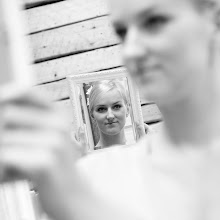While reading the second chapter of Virtual Art: from Illusion to Immersion I witnessed with pleasure that my thoughts of surrogate travel discussed in my earlier post connects delightfully to the history of painted illusions by Oliver Grau. From frescoes and wall paintings in historical buildings the story gets to the development of giving stronger illusional effect. In the end of 18th century the panorama view was invented by Robert Barker.
By the means of traditional painting the panorama has been the most sophisticated 360 degree illusion space crated forming an optical illusion. The first on purpose Panorama (1972) showed publicly in London was a two-storied circular house built for illusional experience. Inside the building there was 360 degree painting with upper and lower edges not to be seen to the observer, as well as the light from above which was illuminating the picture in a way that it seemed to be the source of the light itself. The Panorama became enormously popular among the citizens and a new job was started - panorama painters. (Grau, 58, 62)
Painting panoramas from cities became so popular that patents were released and industrial production started. The panoramas toured in several cities in Europe and North-America and depicted great scenery, well-known, distant or exotic places. The fact that the panoramas were touring around and were reachable for the entrance fee that was a fraction of what a travel would have cost, made them "economical surrogate for travel" (Grau, 69, note 178) or a "travel with the eye." (Grau, 69)
In the end of the 18th and at the beginning of 19th century travelling to distance places and other continent was extremely time consuming in comparison to nowadays, as well as expencive and therefore unthinkable to great part of the population. The invention of circular painting and panoramas gave the citizens surrogate travel feeling being in their own town. The illusion of being in another place may be compared to the effect that Google Streetview gives us in the 21th century - no cost, no time spent to get to another geographical point in the World.
By the means of traditional painting the panorama has been the most sophisticated 360 degree illusion space crated forming an optical illusion. The first on purpose Panorama (1972) showed publicly in London was a two-storied circular house built for illusional experience. Inside the building there was 360 degree painting with upper and lower edges not to be seen to the observer, as well as the light from above which was illuminating the picture in a way that it seemed to be the source of the light itself. The Panorama became enormously popular among the citizens and a new job was started - panorama painters. (Grau, 58, 62)
Painting panoramas from cities became so popular that patents were released and industrial production started. The panoramas toured in several cities in Europe and North-America and depicted great scenery, well-known, distant or exotic places. The fact that the panoramas were touring around and were reachable for the entrance fee that was a fraction of what a travel would have cost, made them "economical surrogate for travel" (Grau, 69, note 178) or a "travel with the eye." (Grau, 69)
In the end of the 18th and at the beginning of 19th century travelling to distance places and other continent was extremely time consuming in comparison to nowadays, as well as expencive and therefore unthinkable to great part of the population. The invention of circular painting and panoramas gave the citizens surrogate travel feeling being in their own town. The illusion of being in another place may be compared to the effect that Google Streetview gives us in the 21th century - no cost, no time spent to get to another geographical point in the World.

No comments:
Post a Comment